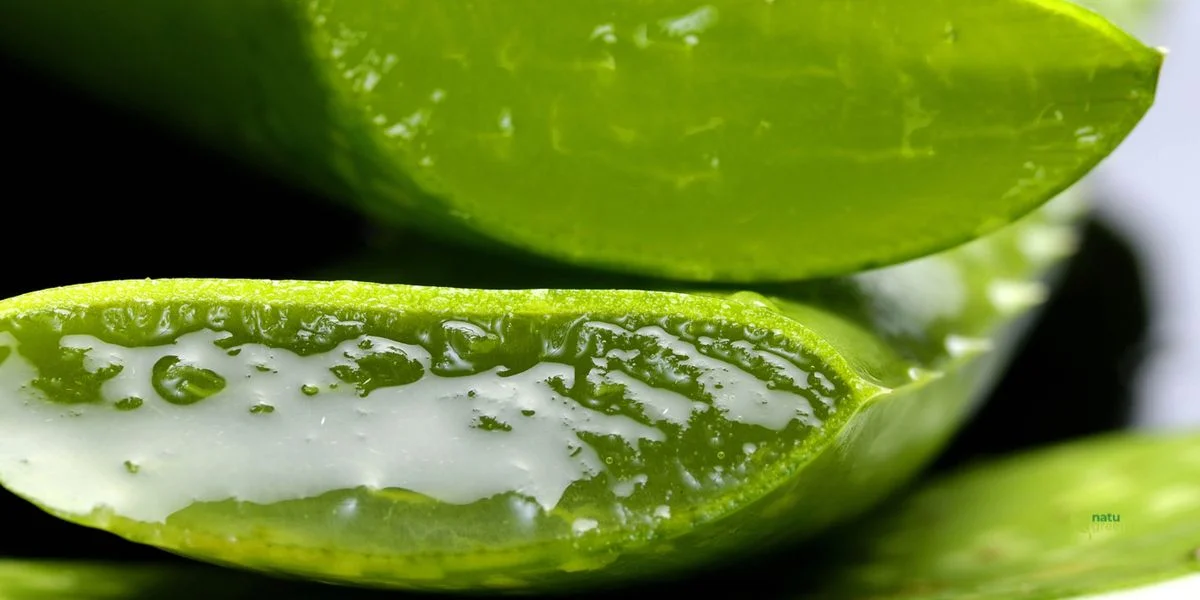Aloe vera, commonly known as true aloe, is a succulent plant revered for centuries for its remarkable medicinal and cosmetic properties. Native to arid regions, this resilient plant stores a transparent gel within its fleshy leaves, which is the source of its bioactive compounds. Both topical application and internal consumption (in processed forms) of the gel and the latex (a yellowish liquid between the gel and the rind) have been associated with a wide range of benefits, from wound healing to digestive support. Modern science continues to investigate Aloe vera to validate its traditional uses, identifying components like polysaccharides, vitamins, enzymes, and minerals that contribute to its therapeutic actions. Exploring Aloe vera is discovering a universe of natural applications for health and beauty, but it is crucial to understand the correct forms of use and necessary precautions.
Popular Names
- Aloe vera (English)
- English: Aloe vera, True Aloe, Medicinal Aloe, Barbados Aloe, Burn Aloe
- Portuguese (Brazil): Babosa, Aloe vera
- Portuguese (Portugal): Aloé vera
- Spanish: Áloe vera, Sábila, Acíbar
- French: Aloès, Aloès commun
- German: Echte Aloe
- Chinese: 芦荟 (Lúhuì)
- Sanskrit: घृतकुमारी (Ghritkumari)
Composition and Bioactive Properties of Aloe vera
Aloe vera is a rich source of active compounds, totaling over 75 constituents. These include vitamins (A, C, E, B12, folic acid, choline), enzymes (such as oxidases, amylase, catalase), minerals (calcium, chromium, copper, selenium, magnesium, manganese, potassium, sodium, zinc), sugars (monosaccharides and polysaccharides, like acemannan), fatty acids, hormones (auxins and gibberellins), and amino acids. The synergistic action of these compounds confers upon plant its anti-inflammatory, antibacterial, antiviral, antifungal, antioxidant, and immunomodulatory properties. The gel, in particular, is rich in mucilaginous polysaccharides, responsible for its moisturizing and soothing capabilities. The latex, on the other hand, contains aloin, a compound known for its strong laxative effects. The diversity and concentration of these bioactives make true aloe a very versatile plant.
Distinction between Gel and Latex
It is essential to distinguish between the gel and the latex of Aloe vera. The gel is the clear, jelly-like substance found inside the leaf, widely used for topical applications and, in certain processed forms, for internal consumption (after aloin removal). The latex, however, is a yellowish, bitter liquid located between the green rind and the gel layer. This latex contains aloin and is known for its powerful laxative properties. Internal use of the latex should be approached with extreme caution due to the risk of side effects and toxicity. Commercial Aloe vera products intended for internal consumption are typically processed to purify the gel and significantly reduce or eliminate aloin content.
Key Bioactive Compounds
Among the many compounds found in Aloe vera, several are particularly notable for their therapeutic actions. Acemannan, a polysaccharide found in the gel, is known for its immunomodulatory and antiviral properties. The phytosterols in the plant possess anti-inflammatory activity. The antioxidant vitamins (C and E) and minerals like zinc and selenium contribute to cellular protection. Aloin, found in the latex, while a potent laxative, has also been studied for potential anti-tumor effects, although direct internal use is discouraged due to toxicity. Research continues to clarify the specific roles and interactions of each component.
Therapeutic Benefits of Aloe Vera
The benefits of Aloe vera are vast and supported by both traditional medicine and scientific studies. Its most well-known application is in the treatment of dermatological conditions. Aloe vera gel is effective in healing burns (including sunburn), wounds, and cuts, accelerating skin regeneration and reducing inflammation. Its moisturizing and soothing properties make it an excellent natural remedy for dry, irritated skin or conditions like eczema and psoriasis. Beyond skin benefits, true aloe may also offer digestive support, contribute to oral health, and possess general anti-inflammatory effects.
Benefits for Skin and Hair
Aloe vera is a popular ingredient in beauty and personal care products due to its benefits for skin and hair. On the skin, the gel deeply hydrates without feeling greasy, calms irritations, reduces redness, and aids in the healing of acne and other lesions. Its antioxidants help combat premature aging. For hair, plant can serve as a natural conditioner, promoting hydration, strengthening strands, and helping to reduce dandruff due to its antifungal properties. Direct application of the fresh gel is a common and effective practice for various skin issues.
Support for Digestive Health
Internal consumption of Aloe vera (particularly purified juices and products) has been explored for its potential digestive benefits. It is believed that aloe may help soothe the digestive tract, reduce inflammation, and promote gut health. Some studies suggest it may be helpful in managing symptoms of irritable bowel syndrome and constipation (the latex is more potent here but requires caution). It is crucial that internal consumption involves only products specifically prepared for this purpose, with minimal to no excess aloin.
Other Potential Health Applications
Beyond dermatological and digestive uses, Aloe vera has been investigated for other potential benefits. Its anti-inflammatory properties may be useful in managing inflammatory conditions. Some studies indicate that aloe may help regulate blood sugar levels in individuals with type 2 diabetes, although more research is needed. Aloe vera has also been studied for oral health, potentially reducing gum inflammation and fighting bacteria. However, many of these uses still require more robust scientific evidence.
How to Use Aloe Vera Safely

Aloe vera gel.
The method of using Aloe vera depends on the desired benefit. For topical use, the fresh gel extracted directly from the leaf is widely used. Simply cut a leaf at the base, remove the spiny edges and the yellowish latex, and apply the clear gel to the affected skin. For internal consumption, it is essential to use high-quality commercial products, such as juices or capsules, that have been processed to minimize aloin content. Direct internal use of the fresh latex is not recommended due to health risks.
Guide to Topical Application
To apply Aloe vera gel topically, wash the area to be treated thoroughly. Cut a leaf at the base, remove the spiny edges and the green rind. You will see the transparent gel inside. Scrape out the gel with a spoon or knife, making sure not to include the yellowish liquid (latex). Apply the gel directly to the skin. It can be used for burns, minor cuts, insect bites, irritations, and as a moisturizer. The gel can be stored in the refrigerator for a few days.
Internal Use (Processed Products of Aloe vera)
Internal consumption of Aloe vera should only be done using purified commercial products (juices, gels, capsules). Strictly follow the manufacturer’s dosage instructions. These products are processed to remove most of the aloin, making them safer for ingestion. Internal use is often sought for digestive or immune support, or as part of a detoxification regimen. Consult a healthcare professional before starting internal use, especially if you have pre-existing medical conditions or are taking other medications.
Potential Side Effects and Contraindications of Aloe vera
Although is generally safe for topical use, internal use, especially of the latex, can pose risks. Aloe latex is a potent laxative and can cause cramping, diarrhea, electrolyte imbalance (particularly potassium), and abdominal pain. Chronic use of the latex has been linked to kidney and liver problems. The purified gel for internal consumption is safer but may still cause digestive discomfort in some individuals.
Risks Associated with Internal Use
The primary risk of internal use of Aloe vera is related to the latex, which contains aloin. Aloin can irritate the intestinal lining and, in high doses or with prolonged use, can be toxic. Symptoms of toxicity may include severe diarrhea, dehydration, and kidney and liver problems. Pregnant or breastfeeding women, children, and individuals with intestinal conditions (such as Crohn’s disease or ulcerative colitis) or kidney problems should avoid internal use of plant.
Drug Interactions
Aloe vera, particularly the latex, can interact with certain medications. Due to its laxative effect, it may decrease the absorption of oral medications. Concurrent use with diuretics or medications affecting potassium levels can increase the risk of electrolyte imbalance. People taking medications for diabetes or anticoagulants should also exercise caution and consult a doctor before using Aloe vera internally, as it may potentiate the effects of these medications. In summary, Aloe vera is a plant with significant therapeutic potential, particularly for skin health. Its internal use requires caution and the selection of purified products. Always consult a qualified healthcare professional or herbalist before using Aloe vera to treat any health condition, ensuring safe and effective use. Understanding the difference between the gel and the latex and being aware of the contraindications are essential to harness the benefits of this ancient plant.



